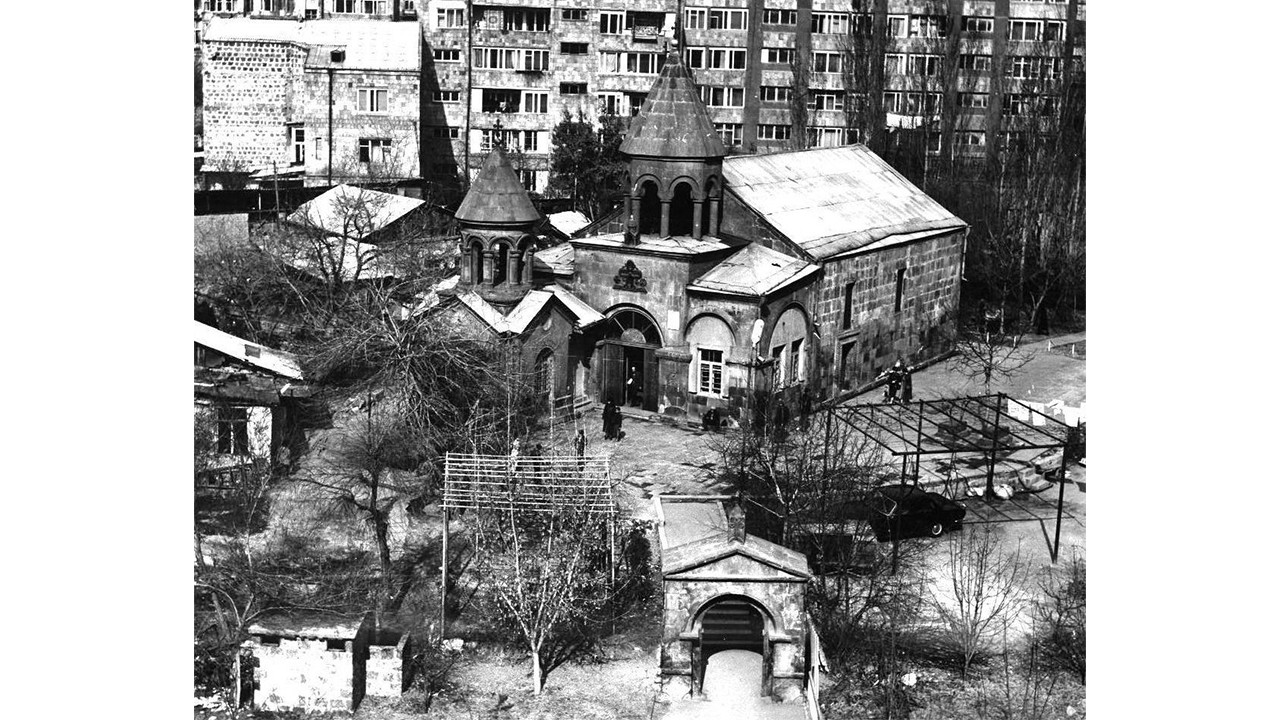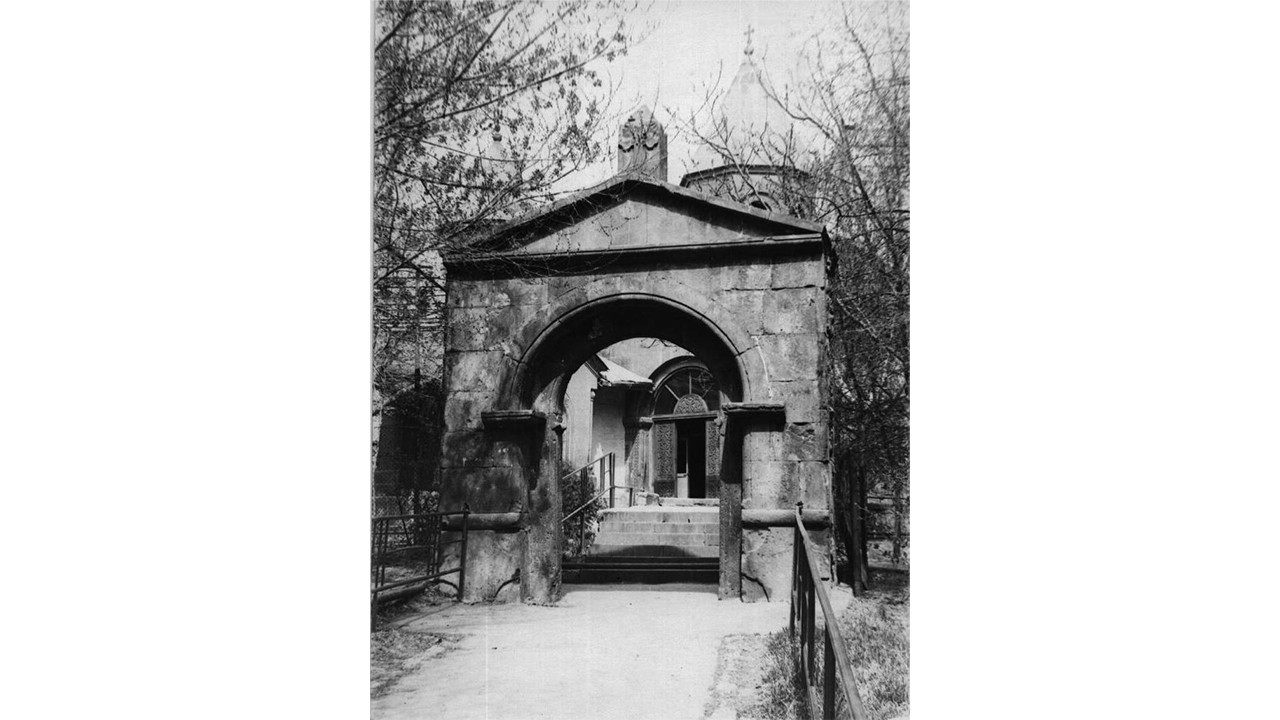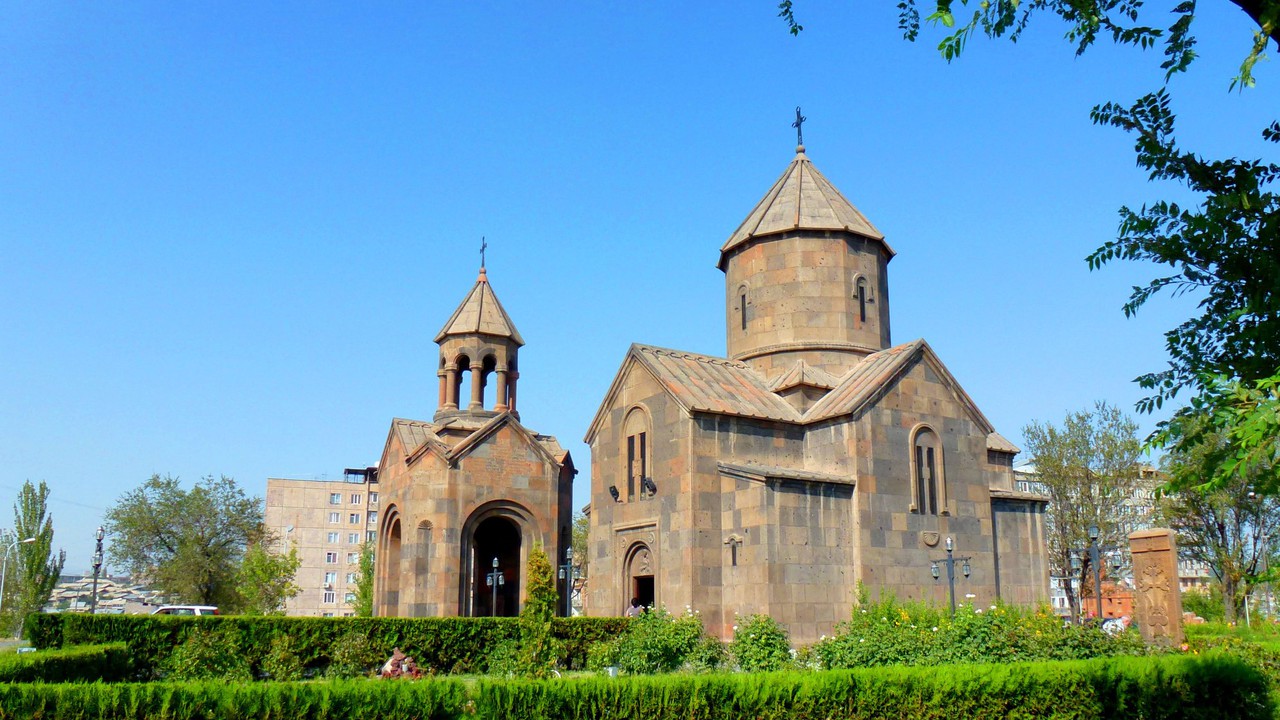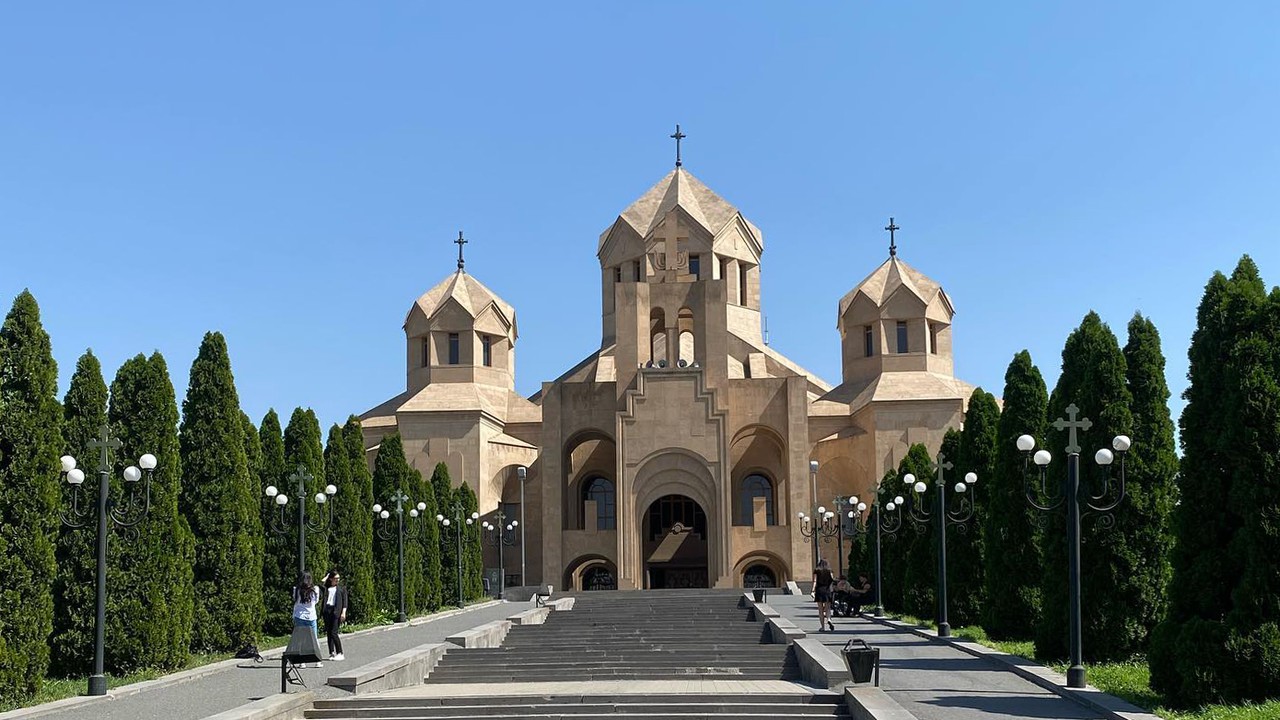PLACES OF WORSHIP
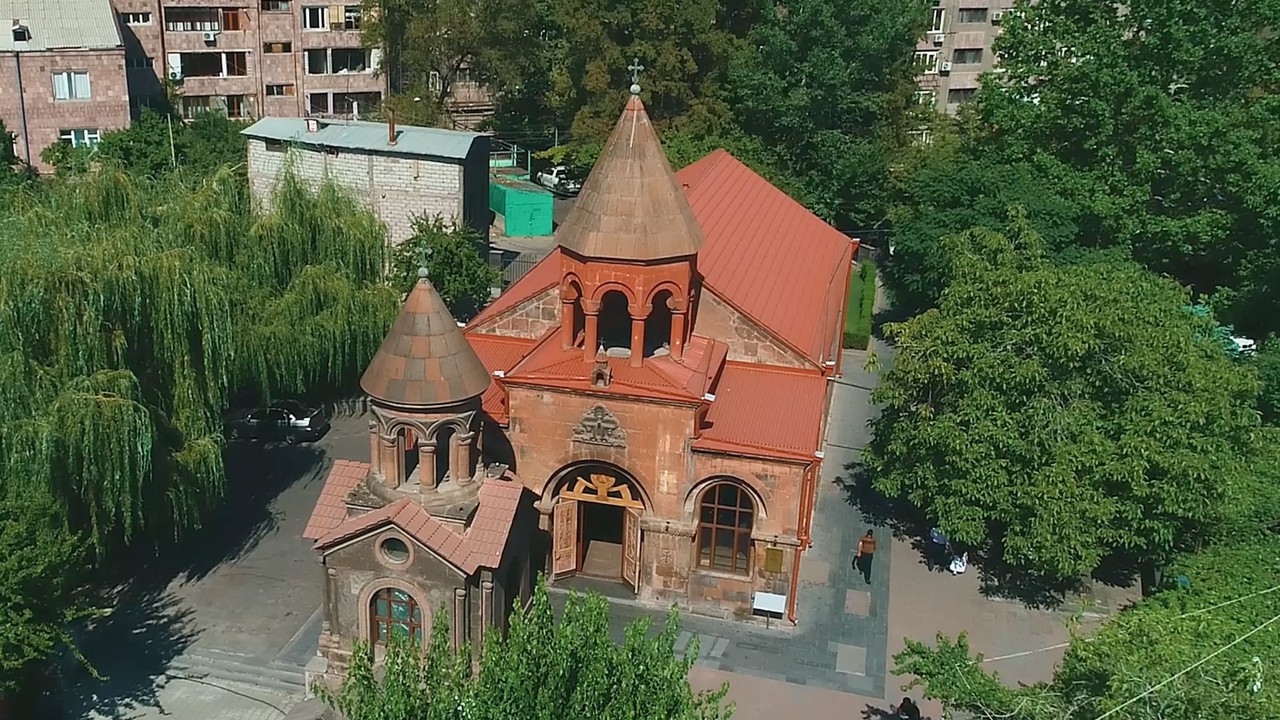
CHURCH COMPLEX ZORAVOR SURB ASTVATSATSIN (Church Complex of the Mighty Holy Mother of God)
XVII-XIX centuries
State index: 1.6.72
The church is located in Ghazar Parpetsi 9B street, within a densely constructed residential buildings. The original building was a small chapel built on the grave of the Holy Apostle Ananias, located on the northern side outside of old Yerevan borders.
In
the first quarter of the XVII century, priest Movses (later Catholicos of all
Armenians Movses III Tatevatsi: 1629-1632) established a hermitage around that
chapel by the means of Yerevanian residents and merchants, and constructed a
wooden building, a fenced complex consisted of a parsonage house, a primacy,
cells of congregants, also founded a monastery school, that served as one of
the spiritual and scientific centers of that time.
In
1635-1636, during the Turkish-Persian war, all the buildings in the hermitage,
except from the chapel, were destroyed. In 1637 Catholicos of all Armenians
Philip I Aghbaketsi (1632-1655) rebuilt the monastery from stone material, but
once again the monastery was destroyed by the Ararat valley disastrous
earthquake. Nowadays, the standing, three-nave basilica church of St.
Astvatsatsin, with one pair of gables, and the three-arched hole vestibule-hall
attached to the western façade were built in 1693 due to the donation of the
wealthy Yerevanian Khoja Panos. An entrance to the grave of St. Ananias was
created inside the church, from the northern side of the gable.
In
1889, the grave was separated from the church, the inner entrance was closed
and the current small chapel with eight columns and a dome was built on top of
it. Here is situated the tombstone of the Holy Apostle Ananias.
South-western
part of the church serves as a gate (the XVII-XIX centuries wall has not been
preserved). From the ever-existed graveyard around the church, on the southern
side, several tombstones with inscriptions dating back to 1811, 1891, and 1918
have been preserved.
On
the eastern front of the church, there are installed khachkars dedicated to the
family members of Khoja Panos.
Also,
there are khachkars (cross-stones) with inscriptions on the western wall of the
vestibule, one of them is made by Master Hovhannes (15th century).
In
1781, clergyman Avetis, the leader of the Holy Apostle Ananias hermitage, put
a stone crosse-bearer in the altar of the church. In 1793 the roof of the
church was repaired by the centurion Gabriel, who was a member of the famous
Yerevanian Geghamyan family.
The
monastery resumed functioning until 1835, after which it transformed into a
parish school. The church is called Zoravor St. Astsvatsatsin in name of a
manuscript that had been kept here and believed to be “Mighty” and miraculous.
During 1978-1980 some transformations have been made: the arches of the vestibule were covered with windows, the central arch was turned into the main entrance, and an additional floor was added to the western part of the hall.
“Scientific Research Centre of Historical and Cultural Heritage” SNCO
Yerevan Municipality





